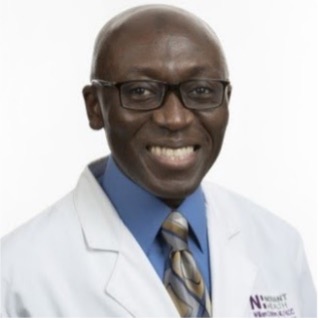We are so excited to showcase some of our brilliant UME educators in the department of medicine and across our AHEC sites. For many of us there are certain teachers in our past who left a mark on our lives and are highly valued. For some they may be the reason you went into medicine or the specialty you are in. The DOM along with the AHEC sites have many highly regarded educators who are closely involved in teaching and mentoring our students. Thus, we want to feature some of our educators so that we can all get to know them better.
Drs. Koyal Jain and Ashley Henderson
 What is your role in undergraduate medical education?
What is your role in undergraduate medical education?
My current role is Clinical Associate Professor of Medicine and Clerkship Site Director of the Application Phase’s course, Hospital, Interventional, & Surgical Care (HISC) Internal Medicine rotation, UNC School of Medicine, Charlotte Campus.
Tell us a little about how got interested in education and your background?
My interest in education dates back to my high school years at Prempeh College in Kumasi, Ghana, and medical school education years at the University of Ghana Medical School. I was impressed with the dedication and bedside teaching from teachers, especially my professors in pediatrics, medicine and surgery. This experience taught me the rudiments of bedside and clinical teaching. My mentors and teachers during my graduate medical education in Internal Medicine and Cardiovascular Medicine in New York gave me great insights into clinical-pathologic correlations as foundational to medical education. I also credit my mentors at the Wake Forest School of Medicine especially Dr. Greg Hundley, current chief of cardiology & professor of medicine at VCU School of Medicine, and the late Dr. William Little, former chief of cardiology and professor of medicine, for contributing to deepening my interest in combined basic and clinical sciences research to facilitate medical education. These experiences inspired me to train the next of generation of clinicians and clinician-scientists.
What are your goals in the field of medical education?
- Be a bridge builder for students between the bench during foundation phase and the bedside during the Application and Individualization phases.
- Inspire and get students excited to learn at the bedside which is the “basic laboratory” for the clinicians.
- Research innovative educational methods building on medical advancements in biomedical technology and engineering.
- Faculty recruitment: Active recruitment and engagement of Novant Health Physicians and Providers to meet the teaching needs of the curriculum. The recruited faculty also play a vital role for students’ mentoring. The recruited faculty’s wealth of clinical experience in the real world enriches the medical students’ education.
What do you enjoy in your free time or outside work?
- Spending quality time with family, sightseeing and visiting serene natural environments.
- Traveling, especially international traveling, to learn about new cultures.
- Watching documentaries on humanities and history: Especially Public Broadcasting Service (PBS) American Experience, Harvard Professor Henry Louis Gates, Jr, series on the African American history and experience, History Channel on how ordinary people achieved extraordinary heights to add value to humanity.
- Mentoring the youth especially High School Students at the All-Nations United Methodist Church, my local Church in Charlotte.
- Participating in International Missions work in Kwahu, Ghana, West Africa, to strengthen health care provider skills development and basic school education (primary & middle school level) in underserved communities; through collaboration with USA-based Give Hope Global organization and partnership with Presbyterian Church of Ghana and Kwahu communities.
What would you love to see changed (or what do you hope to observe with current changes) in the next 5 years in UME education?
- Sustain efforts to bridge the bench and bedside through parallel advancements in science and technology. Maintenance focus on patient care while embracing new scientific diagnostic and therapeutic interventions.
- Reduce health inequities through structural curriculum changes at the UME level.
- Incorporate dynamic structural curricular changes to meet the changing demographics and epidemiology of diseases: For example, to respond to aging USA population, global migration and disease trends, early exposure to critical care during Application Phase HISC-IM for early understanding of the partnership between medicine and evolution of machines.